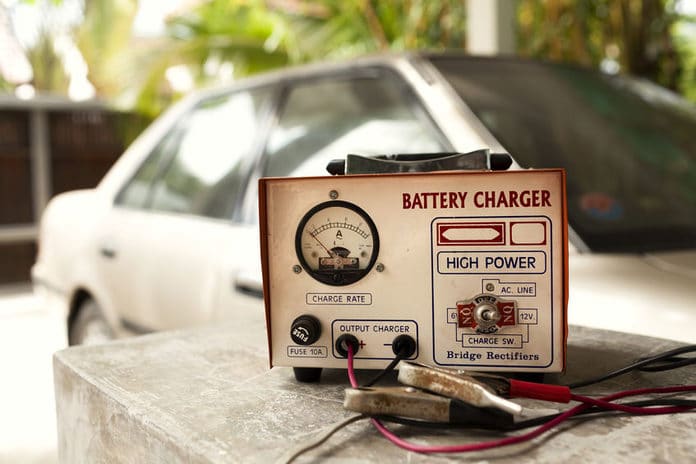
Many people find it hard to differentiate between a deep cycle battery and a regular car battery. There are even some who are yet to come across a deep cycle battery, leave alone understanding the differences. If you’re lucky enough to own a recreational vehicle such as a boat, you’ve probably seen the deep cycle batteries.
Both the deep cycle batteries and the regular batteries are lead-acid batteries and hence operate using the same chemistry. The only significant difference between the two cells is their power supply.
On the one hand, a standard battery is made to release a large amount of electric power over a small timeframe. A deep state battery is designed to give a constant amount of charge over a long period. It’s for this reason that both the deep cycle batteries and the regular batteries have different chargers.
What is the difference between a deep cycle battery charger and a standard battery charger?
The differences include:
1. A deep cycle battery takes a long time to fill the cell, while a regular charges the battery instantly. It will cost you more to acquire a deep cycle battery charger as compared to a regular battery charger.
2. A regular car battery charger is operated manually, while a regular charger switches itself off once the battery is filled.
These are the common differences you’re likely to encounter while charging your RV’s battery and the car’s battery. Without saying much, here is a detailed explanation of the differences.
Comparison between Deep Cycle Battery Chargers and Regular Chargers
1. Charging Speed
As stated earlier, a deep cycle battery takes time to use the charge present in the cell completely. The same way it takes time to lose charge is the same way it takes to charge fully. You must know that a deep cycle battery charger takes at least two days to charge the battery to its full capacity. Therefore, if you’re impatient like me, this charger may not be your thing.
The lead-acid batteries are designed to allow a slow penetration of the acid into the plates. A rapid charge can mess with the battery’s performance because it won’t allow enough time for this battery to do this penetration. Deep cycle battery chargers can’t go past two amps. It’s for this reason that you’re always advised to use the right charger for this line of batteries to boost their life span.
On the other end, regular chargers are designed to offer an instant charge solution. They are, therefore, suitable for your car’s battery because you may require their services now and then. A normal charger takes a day or less to fill your car’s battery. However, the charging time is dependent on the charge amount present in the cell before inserting a charger.
2. Deep Cycle Battery Chargers Are Expensive
Every item you find in the market has a price tag. When it comes to comparing the prices of a deep cycle battery charger and a regular one, the latter is quite affordable.
For example, you can purchase a standard charger at Amazon from as low as $22. But, when it comes to a deep cycle charger, you must be willing to part with nothing less than $100. The price difference is because deep cycle battery chargers offer more significant benefits to the battery as opposed to a standard battery.
Go here to find the best deep cycle battery chargers.
3. Float Vs. Maintenance Chargers
A car battery charger is more of a float charger because it can remain connected to the battery without causing any harm. The charger is usually on standby so that when the battery charge depreciates, it kicks in providing that amount of charge needed to get the job done.
One fantastic thing about using a regular charger as a float charger is that it shuts down on its own when your battery is charged to full capacity. Therefore, by using this type of charger, you reduce the chances of overcharging the battery, which can cause damages to the battery.
On the other end, most deep cycle battery chargers are designed for maintenance and not a quick reboot. These chargers are usually connected to the battery once it has run out of charge. The fact that deep cycle batteries last long means that the charger stays long also without being utilized.
4. Cooling Off Period
Imagine leaving your battery for about two days to charge to full capacity only to be told that you’ve got to give it some additional time to cool down. Well, that is the case with charging a deep cycle battery.
According to battery manufacturers, this type of cells should be allowed to rest, after charging, before being connected to any vehicle. While charging, there is a lot of heat being generated and which can burn out your battery, if it’s connected to a machine, immediately.
On the other end, a deep cycle battery charger doesn’t produce any heat and which block one from using the battery immediately. By using a regular charger, you can connect the battery to your car immediately it’s fully charged.
5. Overcharging
As stated earlier, standard battery chargers are usually connected to a car’s battery, for example. Their primary task is to start charging once the charge levels depreciate. These chargers are generally designed to shut down once the cell is filled to a full-capacity. As a result, by using the charger, you can be sure to avoid cases of overcharging.
On the other end, most deep cycle battery chargers don’t switch off automatically. The fact that the same chargers take even two days to fill the battery makes the deal even worse. Chances of losing track of the charge levels are high, and this can result in more severe damages.
By now, you understand the differences between a deep cycle battery charger and a regular battery charger. Your next step is to shop for the right charger. Shopping for the right charger for your battery can be overwhelming as there many battery charger brands in the market today.
I will, therefore, give you some tips on how to pick the right battery charger for your battery needs.
Tip 1: consider why you need the charger. Your first step towards acquiring the right charger to get the job done should be to identify what you need the charger for. You have got to understand those battery chargers are designed for various purposes. For example, conventional chargers are designed to top up a discharged battery (charging mode).
Also, there are maintenance chargers and which perform the duty of maintaining a fully charged battery only without recharging. Therefore, you must not confuse the two types of chargers.
A maintenance charger is perfect for individuals who rarely use their cars. Using the charger on a battery that is seldom used prevents the cases of draining the charge fully. In return, this charger helps prolong the life of your battery.
Tip 2: consider the type of battery. Today, there batteries which are maintenance-free, wet cell, and lead-acid among many others. Such batteries can use a kind of charger.
However, there are also gel cell batteries and which require a different type of charger to get the job done. Therefore, before deciding to buy a particular charger, you must take your time to consider the battery type.
Tip 3: the size of your battery. The capacity of your battery does play a vital role when it comes to choosing the right charger. When we talk about the battery size, we don’t mean the physical size of the battery. Instead, the volume in question here is the amount of time the battery stores charge.
Therefore, if your battery has a capacity of over 60 hours, you’re advised to take a 10 amp charger. By using such a charger, it means that your fully drained battery will take about six hours to recharge fully. Chargers with more amps mean less charging time.
Tip 4: pick a battery that meets your budget. When buying the vehicle parts, you must consider the price tag. Some chargers tend to be more expensive than others. Therefore, when purchasing the charger, you must take your time to ensure that you end up with the right charger at a price you can afford.
It’s advisable to avoid the low-price chargers as they tend to be low quality. Always go for a charger whose price matches its features. By doing this, you will end up with a charger that will offer the services as per the expectations.
Conclusion
Now and then, I find people inquiring about the differences between a deep cycle battery charger and a regular battery charger. The two types of chargers can be confusing, especially for people who’ve no idea what a deep cycle battery is from the first place.
By reading this article, you will understand the difference between the two cells and their chargers. Read through the entire piece to avoid falling victim of the wrong charger.
Sources:
1. Deep Cycle Battery Charger VS Regular Battery Charger – Know the Difference and Uses – RUF
2. What is a Deep Cycle Battery? – Crown Battery
5. Battery 101: The Difference Between a Trickle Charger and a Regular Battery Charger – Northeast Battery





